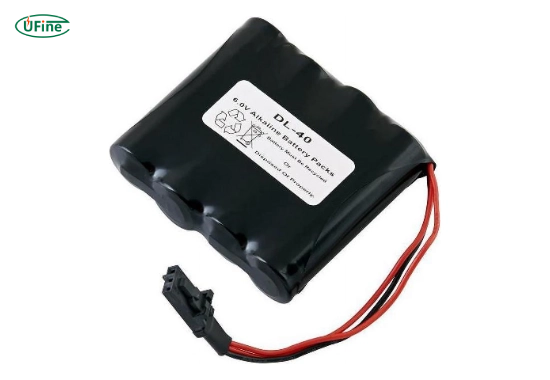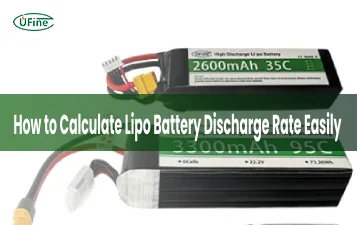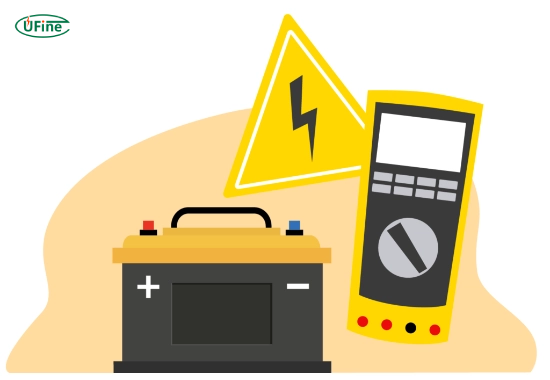Have you ever wondered about 6V batteries and how they can power your devices? These batteries are essential to many applications, from toys to solar energy systems. This guide will explore what 6V batteries are, their types, uses, advantages, and more. By the end, you’ll clearly understand how these batteries work and why they might be the right choice for your needs.
Part 1. What is a 6V battery?
Quick Answer: A 6V battery delivers a nominal voltage of 6 volts and comes in chemistries such as lead‑acid, lithium‑ion, NiCd, and GEL. It balances compact size with moderate energy storage, powering everything from solar lights to ride‑on toys in a single, easy‑to‑install unit.

A 6V battery provides a nominal voltage of 6 volts, suitable for various applications requiring moderate power. Depending on the chemistry used, these batteries can be rechargeable or non-rechargeable.
What Makes 6V Batteries Unique?
The unique aspect of 6V batteries is their ability to deliver sufficient power while remaining compact and lightweight. This makes them ideal for devices that require a balance between size and energy output. Unlike standard household batteries that typically provide 1.5V or larger systems that offer 12V, the 6V battery fills a niche that caters to specific needs.
Part 2. Types of 6V batteries
When it comes to 6V batteries, there are several types available on the market. Each type has its characteristics, advantages, and disadvantages:
| Type | Voltage | Energy Density | Weight | Best For |
|---|---|---|---|---|
| Lead‑Acid | 6V | 40 Wh/kg | Heavy | Backup, Vehicles |
| Lithium‑Ion | 6V | 150 Wh/kg | Light | Portable, EV |
| NiCd | 6V | 50 Wh/kg | Moderate | Tools, Lighting |
| Gel Cell | 6V | 45 Wh/kg | Heavy | Medical, Alarm |
| AGM | 6V | 50 Wh/kg | Moderate | Marine, Vehicles |
Lead-Acid Batteries
Lead-acid batteries are one of the oldest types of rechargeable batteries. They consist of lead dioxide and sponge lead plates submerged in sulfuric acid.
- Pros: Cost-effective, reliable for high current applications.
- Cons: Heavy and less energy-dense compared to newer technologies.
People commonly use these batteries in vehicles and backup power systems due to their robustness.
Lithium-Ion Batteries
Lithium-ion batteries, which use lithium compounds as the cathode material, have become popular recently due to their lightweight design and high energy density.
- Pros: Lightweight, longer lifespan, higher efficiency.
- Cons: More expensive than lead-acid batteries.
Lithium-ion batteries are often found in portable electronics and electric vehicles because they can store more energy in a smaller space.
Nickel-Cadmium Batteries
Nickel-cadmium (NiCd) batteries are another option for 6V applications. They are known for their ability to deliver high discharge rates.
- Pros: Good performance in extreme temperatures.
- Cons: The memory effect can reduce capacity over time.
People often use these batteries in power tools and emergency lighting systems.
Gel Cell Batteries
Gel cell batteries are lead-acid batteries that use a gel electrolyte instead of liquid acid. This design makes them spill-proof and safer for various applications.
- Pros: Maintenance-free, safe for indoor use.
- Cons: More expensive than traditional lead-acid batteries.
People commonly use these batteries in wheelchairs and alarm systems due to their safety features.
AGM Batteries
Absorbent Glass Mat (AGM) batteries are another variant of lead-acid technology. They use fiberglass mats to absorb the electrolyte, making them leak-proof.
- Pros: High discharge rates, resistant to vibration.
- Cons: Higher cost compared to flooded lead-acid batteries.
AGM batteries are often used in marine applications and high-performance vehicles because they can handle rough conditions well.
Part 3. Common uses of 6V batteries
The versatility of 6V batteries allows people to use them in many different applications.
Key Applications of 6V Batteries:
- Off‑grid solar storage
- Electric scooters & ride‑ons
- RC toys, drones, and hobby gear
- Emergency & security lighting
- Medical mobility devices
1. Solar Power Systems
Many solar power systems utilize 6V batteries for energy storage. These batteries can store excess energy generated during the day, at night, or in cloudy weather. They play a crucial role in off-grid solar setups, ensuring you have power when needed.
2. Electric Vehicles
Electric scooters and bikes often use 6V batteries due to their compact size and adequate power output for short-range travel. This makes them an excellent choice for urban commuting or recreational riding.
3. Remote-Controlled Devices
Hobbyists frequently use 6V batteries in remote-controlled cars, boats, and drones because they balance weight and power well. The ability to recharge these batteries also makes them convenient for regular use.
4. Emergency Lighting
6V batteries can power backup lighting systems in emergencies, ensuring safety during power outages. They provide reliable illumination when needed most, making them essential for homes and businesses.
5. Toys
Many toys designed for children utilize 6V batteries as they provide sufficient power while being safe and easy to handle. This includes everything from ride-on cars to interactive learning toys.
Part 4. Advantages of using 6V batteries
Choosing a 6V battery comes with several benefits:
Compact Size
One significant advantage is their compact size. This feature makes it easy to fit into various devices without adding excessive weight, which is especially important for portable applications.
Cost-Effectiveness
Compared to higher voltage options like 12V batteries, 6V batteries are more affordable while providing adequate power for many applications. This cost-effectiveness makes them accessible to both consumers and businesses.
Versatility
Their versatility allows them to be used in numerous settings—home appliances to outdoor equipment—making them a practical choice for many users. Whether you need a battery for everyday use or specialized equipment, a suitable 6V option is likely available.
Part 5. How do 6V batteries compare to other battery voltages?
For a detailed comparison between 6V and 12V battery, see our in‑depth guide:
- Voltage Level: 1.5V batteries are used in small devices, while 6V batteries provide moderate power and 12V batteries suit high‑demand applications like cars.
- Size and Weight: 1.5V are smallest, 6V are medium, and 12V are largest and heaviest.
- Energy Capacity: 1.5V (mAh), 6V (Ah), 12V (Ah)—increasing capacity up the scale.
- Cost: Increasing from lowest (1.5V) to highest (12V).
- Common Uses: Household gadgets → Toys/solar systems → Vehicles/appliances.
Comparison Table
| Feature | 1.5V Batteries | 6V Batteries | 12V Batteries |
|---|---|---|---|
| Voltage Level | Low | Moderate | High |
| Size | Small | Medium | Large |
| Common Uses | Small electronics | Toys, solar systems | Cars, larger appliances |
| Cost | Generally lower | Moderate | Higher |
| Energy Capacity | Limited (mAh) | Higher (Ah) | Highest (Ah) |
Part 6. How to choose the right 6V battery?
Selecting the right 6V battery requires consideration of several factors that determine performance, longevity, and safety.
Discharge Rate (C‑Rating)
The C‑rating tells you how quickly a battery can safely deliver its stored energy. A 1C discharge rate means the battery can output its full capacity in one hour; for example, a 10 Ah 6V battery at 1C can deliver 10 A for one hour. Higher C‑ratings (e.g. 2C, 5C) allow for greater current draw—useful in devices like power tools or high‑performance scooters—while lower C‑ratings suit steady, low‑drain applications like solar lighting.
Operating Temperature Range
- Lead‑Acid & AGM: 0 °C to 50 °C (32 °F to 122 °F)
- Gel Cell: −10 °C to 40 °C (14 °F to 104 °F)
- NiCd: −20 °C to 60 °C (−4 °F to 140 °F)
- Lithium‑Ion: 0 °C to 45 °C (32 °F to 113 °F)
Part 7. Maintenance tips for 6V batteries
Proper maintenance can significantly extend the life of your 6V battery:
Regular Charging
Ensure that you charge your battery regularly according to its specifications. Overcharging or undercharging can damage the battery over time, leading to reduced performance or failure.
Clean Terminals
Use baking soda and water to keep the terminals clean from corrosion. This helps maintain good electrical contact and ensures efficient operation.
Store Properly
If not in use, store your battery in a cool, dry place away from direct sunlight and extreme temperatures to prevent degradation. Proper storage conditions can help maintain its lifespan significantly.
Part 8. FAQs
-
What Is the Lifespan of a 6V Battery?
The lifespan varies depending on the type and usage but generally ranges from 3 to 10 years for rechargeable options with proper maintenance. -
Can I Use a Different Voltage Battery Instead?
Using a different voltage battery can damage your device or cause it to malfunction; always match the voltage requirements specified by the manufacturer. -
Are All 6V Batteries Rechargeable?
Not all 6V batteries are rechargeable; some manufacturers design them for single-use applications like toys or emergency lighting systems. -
How Do I Dispose of Old Batteries?
Always dispose of old batteries at designated recycling centers or collection points. They contain hazardous materials that can harm the environment if thrown away improperly. -
Can I Use Multiple 6V Batteries Together?
Yes, you can connect multiple 6V batteries in series or parallel configurations depending on your voltage and capacity needs; ensure they are identical types and capacities for optimal performance. -
How Long Do 6V Batteries Last?
Rechargeable 6V batteries typically last 3–5 years with proper care; lead‑acid may last 4–6 years, while lithium‑ion can exceed 8 years under moderate cycling. -
What Devices Commonly Use 6V Batteries?
6V batteries power ride‑on toys, solar garden lights, scooters, emergency exit signs, and medical scooters—any moderate‑power, portable application.
Related Tags:
More Articles

LiPo Battery Discharge Rate Guide & Calculation Tips
Understand LiPo battery discharge rates, C-ratings, and how to calculate max current. Essential guide for RC, drones, and electronics users.
High‑Capacity 3S LiPo Batteries: 5000 mAh vs. 10000 mAh
Compare 3S LiPo 5000mAh vs 10000mAh batteries by weight, power, and use. Find the best fit for your drone, RC car, or boat setup.
Top 5 Applications for Small 3S LiPo Batteries
Small 3S LiPo batteries power drones, RC gear, wearables, and robotics with high energy and low weight. Making them ideal for compact electronics projects.
Building and Charging Your Own 3S LiPo Pack: A Step‑by‑Step Guide
Learn how to build, balance, and charge a 3S LiPo battery pack safely at home with this complete DIY guide for hobbyists and beginners.
How to Choose the Right LiPo Battery Plug Type?
Discover the best LiPo battery plug types, how to choose them, and expert tips for safe usage, soldering, and maintenance.





